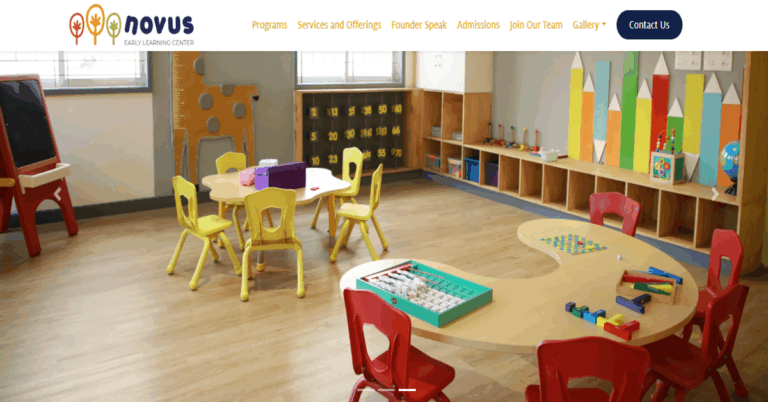Basic Food Hygiene Course: What You’ll Learn and Why It Matters
Food hygiene is a foundation of public health and safety, and a Basic Food Hygiene Course is often the first step for anyone entering the food sector. Whether you’re a home cook, aspiring restaurateur, catering staff, or someone who handles food in any capacity, such a course teaches the essential principles and practices that help prevent foodborne illness. In this article, we will explore what a basic food hygiene course typically covers, the learning outcomes you can expect, and why these skills are so vital in everyday and professional settings.
What Is a Basic Food Hygiene Course?
A Basic Food Hygiene Course is a structured training program designed to introduce participants to the core concepts of food safety and proper hygiene practices. The goal is to build awareness and competence in preventing contamination, ensuring clean environments, and protecting public health. While course durations and formats may vary (e.g. in-person, hybrid, or online), the central content remains largely consistent across institutions.
Such courses target a broad audience: kitchen staff, food handlers, caterers, food stall operators, and even individuals who cook for their families but want to apply professional-level standards. The course ensures that participants have both theoretical knowledge and practical skills to maintain food safety in diverse settings.
Key Topics Covered in a Basic Food Hygiene Course
Below are the core subjects that most basic food hygiene courses will address. Each module builds a piece of the overall understanding required to maintain food safety.
1. Foodborne Illnesses: Causes, Symptoms & Prevention
Participants learn about common pathogens (like Salmonella, E. coli, Listeria), how they cause disease, the symptoms they trigger, and how contamination occurs (e.g. via cross-contamination, undercooking, or poor storage). Recognizing these factors is crucial for preventive action.
2. Personal Hygiene for Food Handlers
Proper personal hygiene is one of the simplest but most critical defenses against contamination. This topic covers handwashing techniques, when and how to wash hands, use of protective clothing (gloves, hairnets, aprons), and policies on illness reporting (e.g. not handling food when ill).
3. Cleaning and Sanitization Procedures
This module delves into how to keep kitchen and food preparation areas clean and safe. Participants learn about different cleaning agents, disinfectants, how to clean equipment and utensils, and the difference between cleaning (removing visible debris) and sanitizing (reducing microbial load).
4. Pest Control and Prevention
Pests such as rodents, insects, or cockroaches pose a serious contamination risk. This segment teaches how to spot signs of infestation, preventive practices to discourage pests (good storage, sealing cracks, proper waste disposal), and safe procedures to handle pest control measures.
5. Safe Food Handling and Storage
This is a core area that covers how to receive, handle, store, prepare, and serve food safely. It includes topics like temperature control (cold chain, hot holding), avoiding cross-contamination (using separate cutting boards, utensils), proper thawing and cooking protocols, and the principles of the first-in, first-out (FIFO) system for inventory.
6. Allergen Awareness and Management
Food allergies can cause severe reactions. In this module, participants learn to identify common allergens, strategies to avoid cross-contact (e.g. dedicated equipment, cleaning between tasks), labeling requirements, and how to communicate allergen risks to consumers clearly.
7. Waste Management and Disposal
Correct disposal of waste, separating general waste, recyclables, and dangerous waste (e.g. sharp items), and maintaining cleanliness in garbage areas are essential in preventing contamination and pests. Handling of food waste, grease traps, and similar aspects are also usually addressed.
8. Food Safety Legislation and Regulatory Requirements
Participants are familiarized with the legal frameworks that govern food handling, licensing, local food codes, inspection protocols, and compliance. This ensures they understand not just the “how” but also the “must” — what is legally required in their region.
Learning Outcomes: What You Will Be Able to Do
Upon successful completion of a Basic Food Hygiene Course, students typically attain the following abilities:
-
Identify food safety hazards: Understand biological, chemical, and physical hazards and where they may appear in the food chain (from delivery to serving).
-
Explain foodborne disease mechanisms and prevention: Know how pathogens proliferate, how cross-contamination happens, and the preventive barriers you can build.
-
Implement proper personal hygiene practices: Adopt handwashing, protective clothing, and illness reporting discipline among staff.
-
Perform cleaning and sanitizing correctly: Choose appropriate cleaning agents, follow cleaning schedules, and maintain hygiene of surfaces and equipment.
-
Manage pests effectively: Recognize signs, prevent entry, and maintain pest-resistant environments.
-
Handle food safely from receipt to service: Control temperature, avoid cross-contamination, and apply correct storage and cooking techniques.
-
Manage allergens safely: Recognize allergenic ingredients, prevent cross-contact, and communicate allergen information responsibly.
-
Apply waste disposal best practices: Segregate waste, dispose of sharp or harmful materials safely, maintain cleanliness in waste areas.
-
Comply with applicable food safety laws and standards: Understand the legal obligations and maintain documentation, record-keeping, and compliance readiness.
In many jurisdictions, completing the course also results in a certificate or credential that demonstrates your competence in food hygiene—often a requirement for employment in food service roles.
Why a Basic Food Hygiene Course Is Essential
Public Health Protection
Foodborne illnesses affect millions globally each year. Even a single lapse—improper handwashing, temperature error, or cross-contamination—can cause outbreaks. Educated food handlers are the frontline defense against such risks.
Building Consumer Trust
Customers expect that when they eat food outside their homes, it’s safe. A food establishment that visibly follows hygiene protocols inspires confidence, fosters reputation, and reduces liability risk.
Legal and Regulatory Compliance
Many countries mandate that food handlers complete hygiene training and maintain certification. Being properly trained helps businesses avoid penalties, closures, or reputational harm from violations.
Cost Reduction and Waste Minimization
Poor hygiene and mishandling of food lead to spoilage, contamination, and waste. By applying proper storage, temperature control, and handling procedures, businesses save losses and operate more efficiently.
Career and Professional Growth
For individuals, holding a food hygiene certificate enhances employability. In food service, catering, or hospitality, it’s often a prerequisite. It also lays the foundation for more advanced food safety qualifications.
Tips for Getting the Most from Your Course
-
Be hands-on where possible: If the course includes practical sessions (kitchen simulations, cleaning drills), engage actively—practice cots, swabbing, cleaning, etc.
-
Ask scenario-based questions: Request real-world cases (“What if power fails and refrigeration is lost?”) to deepen understanding.
-
Review local regulations: The legal requirements for food safety vary by region; check the rules applicable in your city or country.
-
Use mnemonics or checklists: Many find it helpful to maintain checklists (e.g. daily cleaning chart, allergen checklist, temperature logs).
-
Stay updated: Food safety science evolves—pathogens, guidance, and regulation change. Consider refresher courses or updates periodically.
Conclusion
A Basic Food Hygiene Course is more than just a checkbox in the food industry—it’s a critical investment in safety, quality, and professionalism. From understanding the fundamentals of foodborne illness to mastering effective cleaning strategies and allergen awareness, these courses equip you with the tools needed to uphold high standards in any food context.
Whether you’re entering the culinary world or simply want to apply best practices in your own kitchen, the knowledge and credentials you gain are valuable assets—benefiting you, your consumers, and public health at large. If you’re preparing to take such a course or already enrolled, focusing on practical application, regulatory understanding, and continuous learning will ensure you reap the full benefits.







